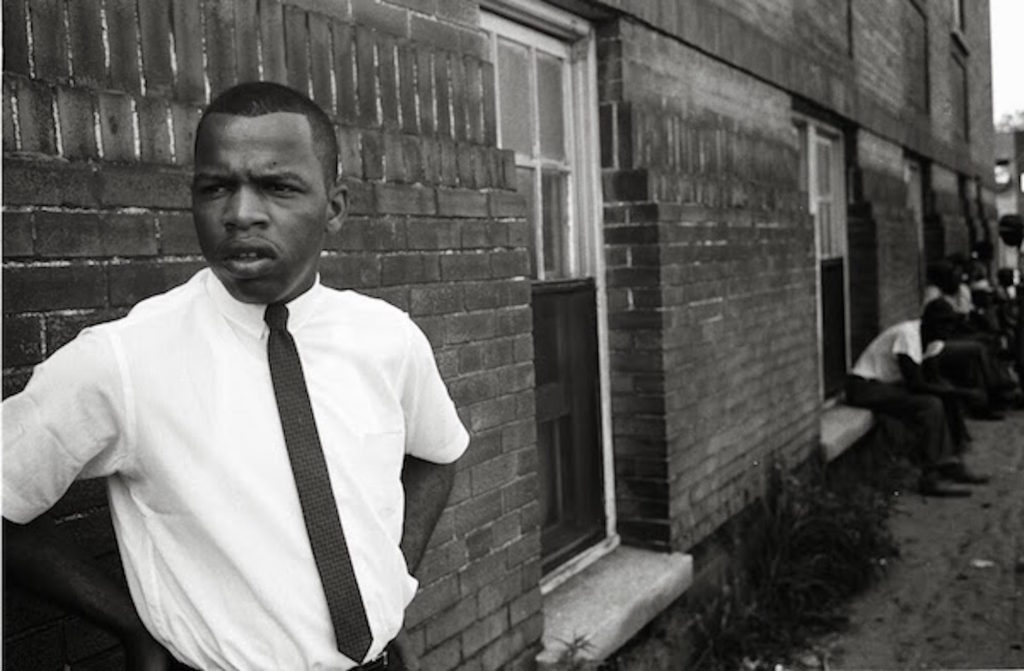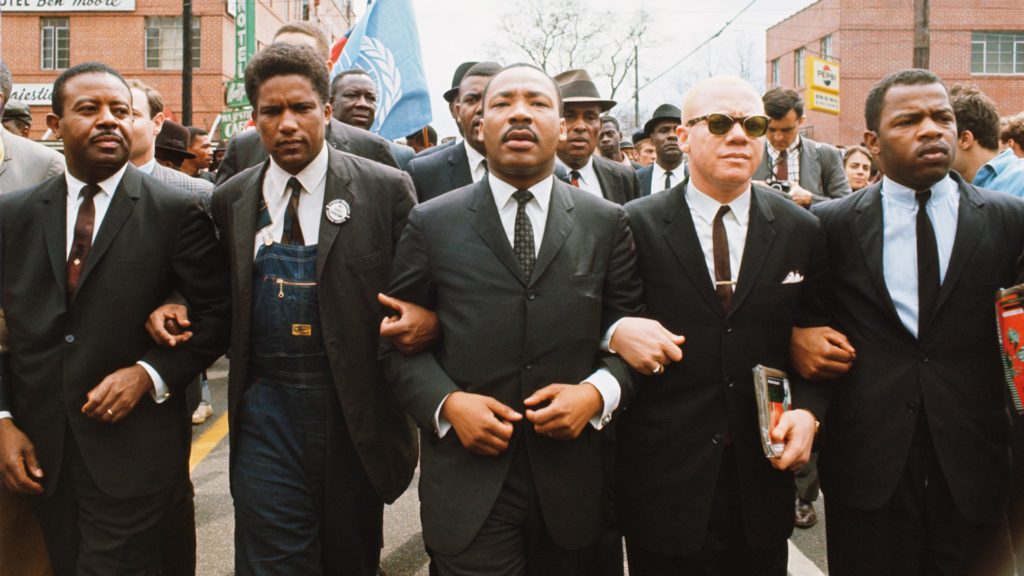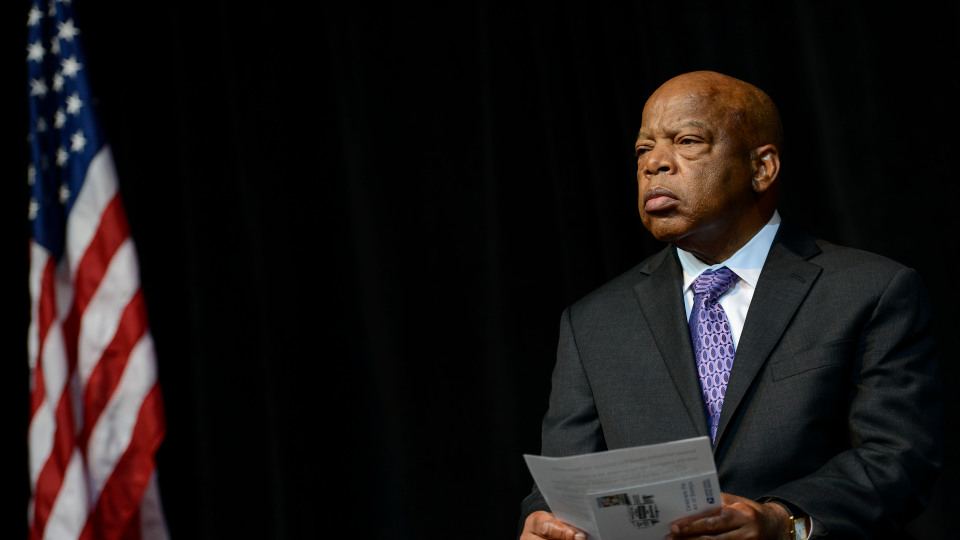
CONGRESSMAN JOHN LEWIS
Congressman John Lewis spent many years fighting for the civil rights of African Americans and all people of color.

Staring at the picture of Congressman John Lewis, my thoughts focused on the question: What are the building blocks that make one man exhibit courage, inner strength, faith and strong moral values and another exemplify cowardice, self-absorbance, cruelty and no visible signs of moral values? I had no response . . . so I decided to concentrate on the positive. Consequently, this article will look at the Congressman as a young man, civil rights activist, political leader and …human being. It will in many cases, pose a question, and then, seek to answer it by examining the life of John Lewis.
THE YOUNG MAN

What was adolescent Lewis doing in his hometown of Troy, Alabama? The same thing most young African American children were doing … trying to understand a nation that saw him as “less than” because his face was brown. Leaving his father’s farm and venturing into his southern town, young Lewis came face-to-face with “colored” signs that told him he could not do this, sit there, go in that place of enter that school.
LIFE LESSONS: WHITE ONLY – COLORED
That was a hard, but truthful lesson he had to learn, but at 15, he heard a man who said that was not the claim his nation made to its citizens, and he did not have to be satisfied with obeying those signs. That man . . . Dr. Martin Luther King Jr. From Dr. King, Lewis learned that his nation said, “All men are created equal,” and it believed in “a more perfect union,” and . . . even though he was black, he could hold his nation accountable for those words; he could challenge it to honor those words with actions; he did not have to believe his black skin denied him equal rights, human rights and human justice. But . . . King said . . . he would have to fight for them, and young Lewis . . . was ready to fight!
THE CIVIL RIGHTS ACTIVIST

Walking arm-in-arm with a deep sense of right, Lewis’s life led him into the nightmare arms of police brutality–brutality that left him close to death. As a Freedom Rider, he and other riders were beaten with baseball bats, chains, lead pipes, and stones in Birmingham, Alabama. He continued to fight . . . leading him to one of the most violent attacks by whites in Montgomery, Alabama. There, he was left unconscious to die at the Greyhound bus station, after being hit in the head with a wooden crate. Later, in an interview, he stated, “I thought I was going to die.”
March 7, 1967, known as “Bloody Sunday,” Lewis and Activist Hosea Williams, led over 600 marchers across the Edmund Pettus Bridge in Selma, Alabama. They were met by Alabama State Troopers and ordered to disperse . . . when they stopped to pray, the mounted troopers beat them with night sticks. Lewis’s skull was fractured, but he escaped across the bridge to a church in Selma. Lewis bore scars on his head from the incident for the rest of his life. Does all of this sound familiar? It should . . . we see the same such violence by federal officers on our streets in America today.
THE POLITICAL LIFE OF JOHN LEWIS

Having lived through the violence perpetrated by many white Americans, John Lewis believed becoming part of the system that passed laws and changed laws, even as a black man, he could aid in America becoming “a more perfect union.” Quickly, he learned that systemic racism is rooted in the hearts of men . . . it is hundreds of years of buried hatred, discrimination, superiority, fear, greed and a thirst for power and control. But … this did not deter him from the path history had mapped out for him to travel.
In 1986, he won the U.S. House of Representatives’ seat for Georgia’s 5th Congressional District. Many described the Congressman as a “hardcore liberal.” The Washington Post called him “a fiercely partisan Democrat … also fiercely independent.” He was eulogized as the “conscience of Congress.” In many of his decisions, he stood alone . . . opposing the Gulf War, the U.S. Trade Agreement with China, NAFTA, welfare reform and the Iraq War–a war built on lies and deceit . . . Americans learned later after many soldiers had lost their lives in Iraq …there were no “weapons of destruction.”
CONGRESSMAN LEWIS PAVES THE WAY
The bill to create the African American Museum in Washington was introduced by Congressman Lewis. He was a strong supporter of President Barack Obama, but chose not to attend the inauguration of President Donald Trump, saying, “You cannot be at home with something that you feel is wrong, is not right.”
He was passionate about civil rights . . . believing that our nation had the heart and soul to honor its Preamble–a Preamble that claimed all people were the “People of the United States, in Order to form a more perfect Union, establish Justice, insure domestic Tranquility . . .” and set out to prove every person has the right to “secure the Blessings of Liberty to ourselves and our Posterity . . . .” Today, the battle continues to secure that right.
JOHN ROBERT LEWIS THE MAN

Congressman John Lewis never forgot his roots . . . his reasons for choosing a pathway of justice, equality and righteousness. His body wore the scars from fighting for those values. He was a man of honor, integrity, kindness and humility. He did things not because they were easy, but because they were right. His sense of right will be missed in Congress. As a citizen observing how many congressional leaders interact with each other, his sense of respect, courage and servility was rare.
When will we recognize that there is more to just having a booming economy, we can have that booming economy and still express honesty, integrity, lawfulness, truthfulness and love for each other. Have we sold our souls? When did we become a country where the truth does not matter? Were we always such a country? To some extent, we were …history reveals how we painted native Americans as savages . . . they were not, slaves as subhuman . . . they were not and to date, put children in cages . . .they are not lions and tigers . . .they are innocent little children. Where is the heart of America?
As I watched the funeral of Congressman John Lewis, I heard who we are . . . what we stand for . . .and how we must fight to prove it. To every American who reads this article . . . we are the people . . . we set the agenda . . . those guys in Washington work for us! We can put them in . . . and we can remove them. We lost our way, but the millions of black, white, red and yellow people in the streets are reminding us . . . we can find it. LET’S DO IT!

